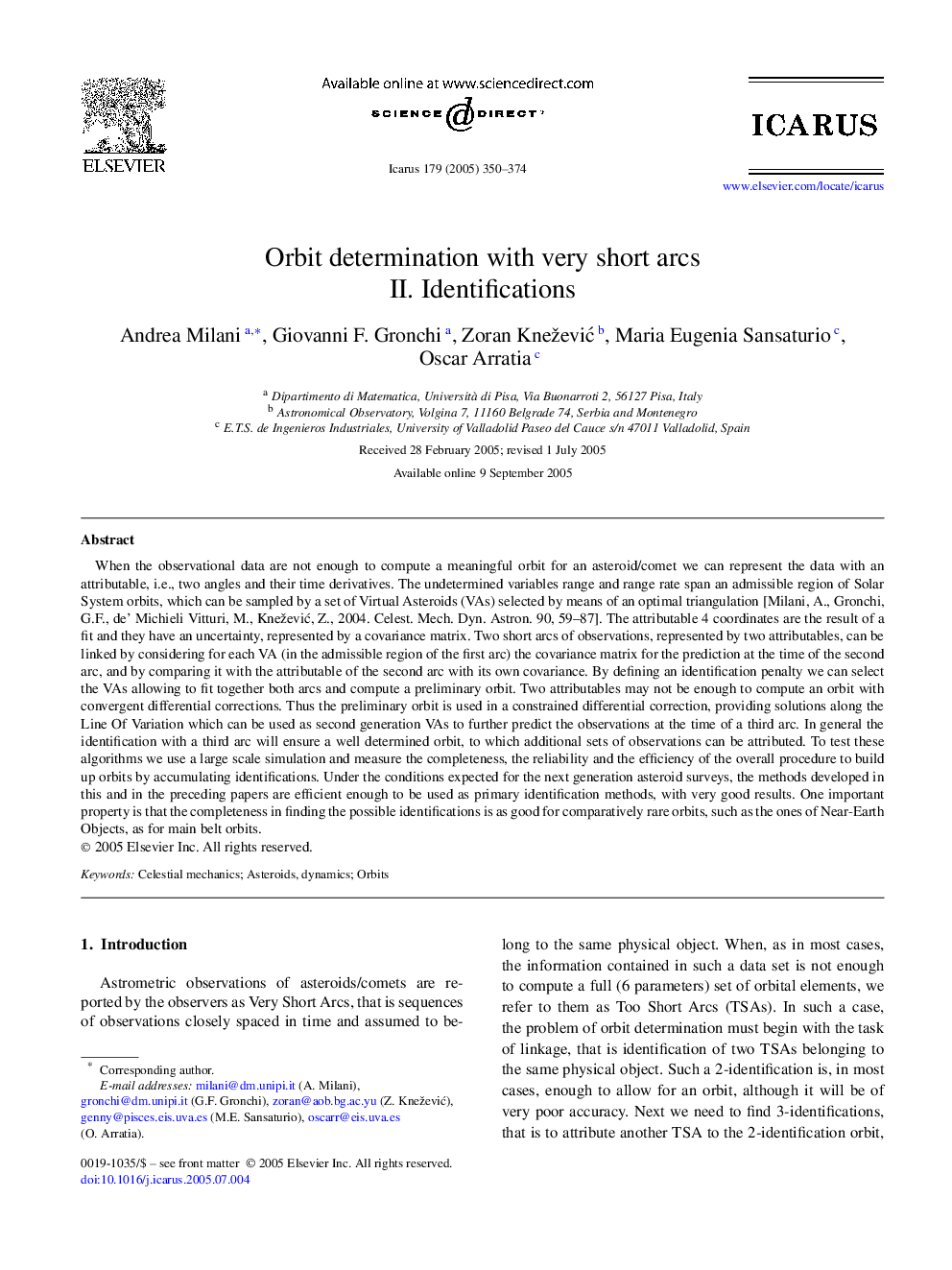| Article ID | Journal | Published Year | Pages | File Type |
|---|---|---|---|---|
| 10702221 | Icarus | 2005 | 25 Pages |
Abstract
When the observational data are not enough to compute a meaningful orbit for an asteroid/comet we can represent the data with an attributable, i.e., two angles and their time derivatives. The undetermined variables range and range rate span an admissible region of Solar System orbits, which can be sampled by a set of Virtual Asteroids (VAs) selected by means of an optimal triangulation [Milani, A., Gronchi, G.F., de' Michieli Vitturi, M., KneževiÄ, Z., 2004. Celest. Mech. Dyn. Astron. 90, 59-87]. The attributable 4 coordinates are the result of a fit and they have an uncertainty, represented by a covariance matrix. Two short arcs of observations, represented by two attributables, can be linked by considering for each VA (in the admissible region of the first arc) the covariance matrix for the prediction at the time of the second arc, and by comparing it with the attributable of the second arc with its own covariance. By defining an identification penalty we can select the VAs allowing to fit together both arcs and compute a preliminary orbit. Two attributables may not be enough to compute an orbit with convergent differential corrections. Thus the preliminary orbit is used in a constrained differential correction, providing solutions along the Line Of Variation which can be used as second generation VAs to further predict the observations at the time of a third arc. In general the identification with a third arc will ensure a well determined orbit, to which additional sets of observations can be attributed. To test these algorithms we use a large scale simulation and measure the completeness, the reliability and the efficiency of the overall procedure to build up orbits by accumulating identifications. Under the conditions expected for the next generation asteroid surveys, the methods developed in this and in the preceding papers are efficient enough to be used as primary identification methods, with very good results. One important property is that the completeness in finding the possible identifications is as good for comparatively rare orbits, such as the ones of Near-Earth Objects, as for main belt orbits.
Related Topics
Physical Sciences and Engineering
Earth and Planetary Sciences
Space and Planetary Science
Authors
Andrea Milani, Giovanni F. Gronchi, Zoran KneževiÄ, Maria Eugenia Sansaturio, Oscar Arratia,
